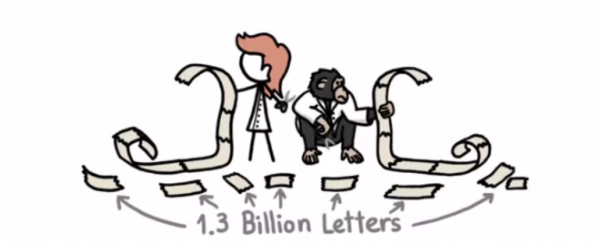Did you know that humans share 50 percent of their DNA with bananas, 80 percent with dogs, and 99.77 percent with chimpanzees? Taken literally, that cute little factoid implies that if you extracted one random cell from a chimp and a human, and untangled the DNA-laden chromosomes within, you'd be able to identify the exact differences in our DNA signatures. But as with all things genetic, it's a whole lot more complicated than that, as the latest episode of MinuteEarth explains above.
Between 6 and 8 million years ago, early chimps and humans split off from our common ancestor, and through chance mutations and natural selection, our genomes changed radically, and allowed new species to arise. One of the most significant changes was that humanoid species ended up with 23 chromosomes, while chimpanzees retained 24. Other changes include whole sections of DNA being replicated or deleted, and many single letters in the genetic code getting switched out for something else.
And, strangely enough, it wasn't these tiny, single letter differences that caused scientists the most grief when they were comparing chimp and human DNA - it was the large sections of code that proved very difficult to identify, says MinuteEarth above. Part of the problem, says the video, is that when scientists come across one section of genetic code that has been duplicated in the human genome but not the chimp genome, should that be counted as one change - say, a single 'paragraph' - or thousands of changes, if we count each individual letter?
What about if you just ditched all of those differences, for example, the same sections of DNA that have been split up and reversed and moved around in chimp and human genomes? Well, that's how you get the 99.77 percent factoid. But you're also now disregarding about 1.3 billion letters of genetic code. Watch the latest episode of MinuteEarth above to find out what this means for our understanding of our relationship to our closest genetic relatives.
